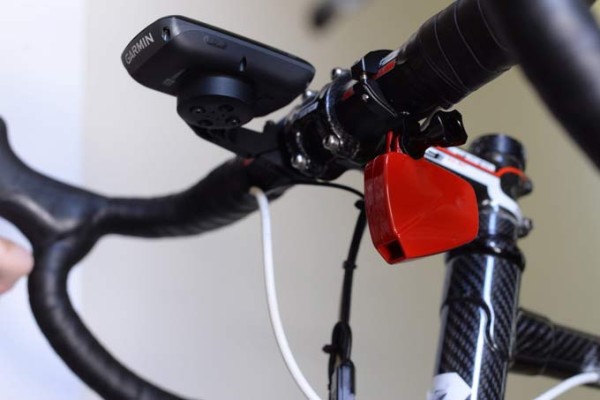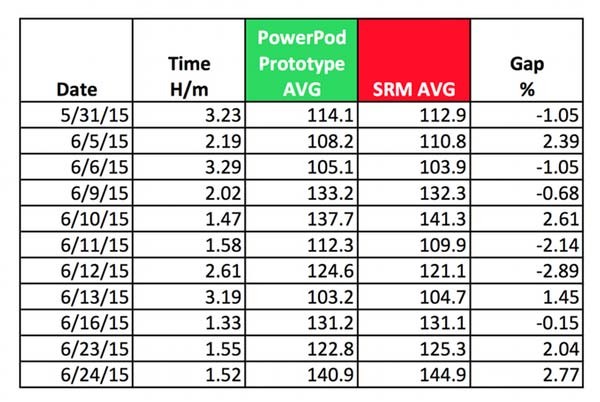What started with their sub-$200 power measuring iBike cycling computers and 11 years of progressive development and updated devices has now morphed into a simple, lightweight add on that measures your power output for display on any ANT+ cycling computer.
The new Velocomp PowerPod weighs just 32g and attaches to a GoPro style mount, then uses air pressure (from the wind you’re riding into), an accelerometer and data from ANT+ speed and cadence sensors to determine your power output with accuracy they claim is on par with an SRM. The benefits are numerous, including ease of use, the ability to swap between bikes quickly and no need to change out cranks, wheels or pedals.
Initially available in black or red, the PowerPod is small and can be setup in about five minutes. Pair it with the speed/cadence sensors (use your own or they’ll offer a set with additional pod mount for $79.99), then pair it to your cycling computer and you’re off. It self calibrates for incline, which is important because it uses incline data along with the other outside influences to determine your power output.
Where traditional power meters measure forces applied to them, the PowerPod measures forces opposing the rider, including hills, wind, friction and acceleration.
Opposing forces equal applied forces (thanks, Newton!), so the measurements it gets have been proven equal to those obtained by “normal” power meters. The chart above shows their test data compared to an SRM, data that resembles results we’ve seen from them in the past when comparing their cycling computer models to popular power meters.
It’s powered by a USB-rechargable battery that’s good for about 20 hours of riding per charge.
The product has been developed and will be brought to market in November 2015 thanks to their already funded (but still open as of this post) Kickstarter campaign. Nab one there for as little as $249 with bundle packages upping that a bit if you need additional mounts, sensors, etc.



